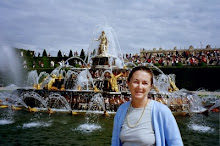 |
| Some Groningen rooftops as seen from our flat on Gelkingestraat |
The World Canals Conference always has a dozen or more presentations on 3 or 4 different topics, held in the mornings, followed by field trips into the late aftternoon, and dinner in some interesting place. The Netherlands Conference, held in the city of Groningen (photos above) was no different. I'll concentrate on the places we went and things we saw rather than the papers read. The field trips began Monday and ended Thursday.
We first visited the province of Drenthe, an agricultural area where peat had been dug for centuries, up until about 1970. The peat canals have been restored for recreational boats, which also entails changing fixed bridges to swing or lift bridges. And a new canal is being build to connect two towns - Erica and Ter Appel, near the border with Germany. Part of it will have to be elevated around a forested area; to do that they are building a double lock at one end and a "water-saving" lock at the other (to pump water back to the double lock - they seem to think that makes sense).
 |
| Listening to public officials at a marina near Ter Appel |
 |
| A view of one corner of the marina. |
 |
| a tray of nibbles - - fruit and cheese |
 |
| Here is one of the new bridges - a lift-bridge |
 |
| Look at his feet! The ONLY time I saw wooden shoes! |
 |
| Cruising along on the Veenparkcanaal in bright sunshine. |
 |
| Veenpark was once a peat mining area. My little engine hauled cars loaded with peat to the canal. I think "Veen" is the same as "fen" in English. |
 |
| Hard to see, but somewhere in there is the double lock under construction. |
 |
| Near the very deep water-saving lock site, Rick Rivers ponders this huge granite glacial erratic, dug up at the construction site. |
 |
| C & O Canal Assn. members: Tom Lightfoot, Linda Lightfoot, Val Wheeler, Rachel Stewart, Laura Gilliam, John Wheeler, Pat White, and Barbara Sheridan - - dinner in the Veenpark restaurant. |
We moved on to Friesland, to visit an aqueduct (the Geauakwadukt), and to see some interesting structures along the way. And we were led by an intense woman who is the architect who designed the aqueduct.
 |
| A bridge made of wood? or a wood veneer? |
 |
| She is the architect who designed the Geauakwadukt, and I found her name thanks to the internet: Tatjana Tzrin. |
 |
| Yes, that boat is above the A7 motorway, through the Geauakwadukt on the Princesmargrietcanaal. (I love the way a Dutch word translates into multiple English words.) |
 |
| This is not a sculpture. It is a beautiful structural wall beneath the aqueduct, separating the motorway lanes. |
 |
| If you wonder who financed the aqueduct, enlarge this photo. |
 |
| We moved on, toward an area that was one of the few natural "hills" in Friesland - a few meters above sea level. |
 |
| High enough above sea level for a burial ground. |
 |
| The town of Aduard was anchored by a Cistercian monastery until Catholics were proscribed. This beautiful building, formerly the monastery's infirmary, is now a Protestant churc. |
 |
| This brickwork is stunningly varied; the monastery was well known for brickmaking. |
 |
| Across the road, we had an introduction to medieval brickmaking. |
 |
| Meanwhile, in a neighboring yard, children played hide-and-seek. In French, that would be cache-cache. Wonder what it is in Dutch. |
Finally, in the province of Groningen, we visited an absolutely enormous and major lock and went into the control room - really a three story tower - where men sat before many monitors showing not just one but several other large locks.
 |
| The enormous draw-bridge is going up, allowing the very long barge to pass. |
 |
| In the control tower, with its many monitors and controllers. |
 |
| Next to the lock, some refreshments were provided. |
 |
| On our return to Groningen, we walked to the yellow building, a large tavern-club where we had dinner. |
 |
| Kathy and Laura looked away from the camera. |
 |
| Yum! Chocolate mousse topped with blueberries and chantilly. |





























No comments:
Post a Comment